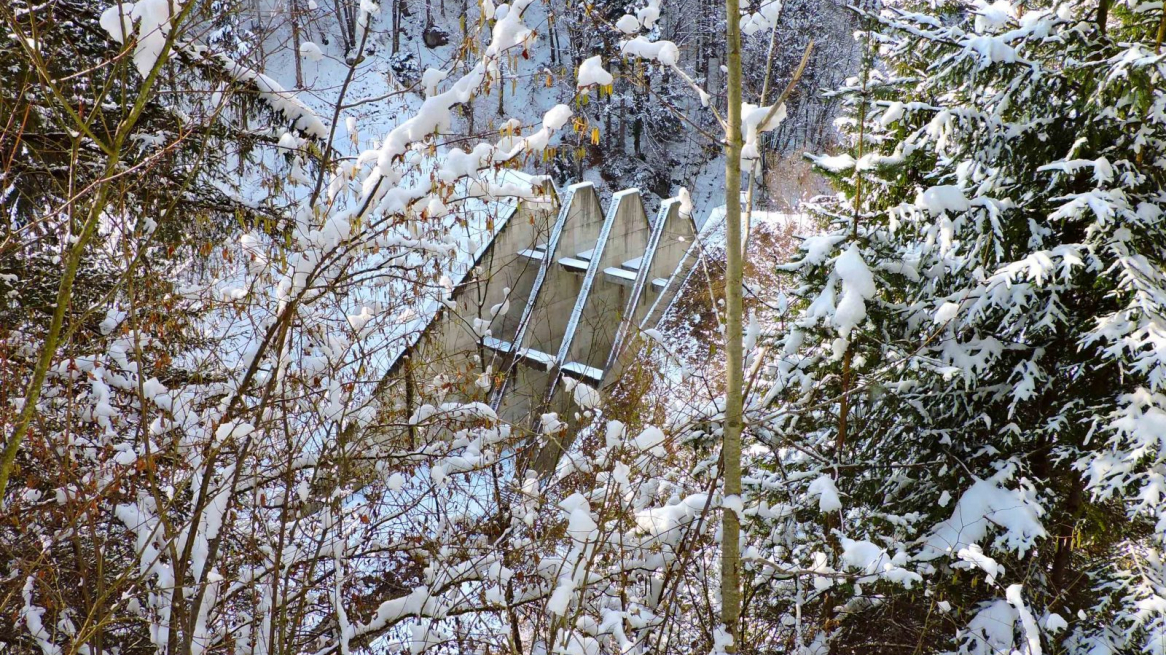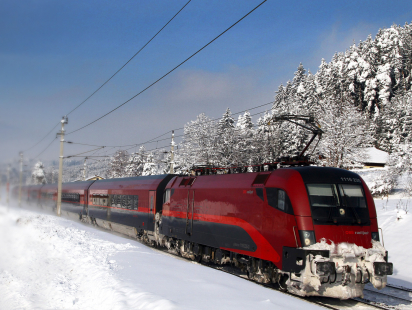Hiking up from Mühlau, a village in the northern outskirts of Innsbruck, through the Mühlauer Klamm, you will come across a very un-Austrian looking construction built across the stream. The structure is 23 meters high, 22 meters wide at the base, and consists of 5 parallel concrete blocks with a reinforced slope on each side. In the unlikely event of an enormous avalanche, it’s there to protect the people of Innsbruck: the mighty avalanche barrier of Mühlau.

I wanted my first blog topic for Innsbruck Tourism to be something not everyone knew about. Even though you can sometimes hear the blasts for the avalanche control at Nordkette, did you know avalanches might form a very real threat to the people of Innsbruck and in particular Mühlaü

A brief history of the Mühlau avalanche path
Innsbruck, January 1951: An avalanche incident damages the power station near the settlement of Mühlau below. Water pipes were also destroyed, causing Innsbruck to suffer from water shortage for several days.
With houses present in the danger zone, a solution was needed to prevent this from happening in the future. The technologies at that time were too expensive and not feasible (partly due to soil conditions). It took another 50 years to start building the avalanche dam as we see it today.

How the Mühlau avalanche dam works
The start zone of the avalanche path is up on Nordkette at an altitude of 1500 to 2350 metres above sea level, covering an area of 260 hectares. The avalanche dam system primarily serves to separate powder and fluid avalanches, and reduce the energy.
Powder avalanches will be slowed down by the ‘concrete comb’ then harmlessly divided by the subsequent trench systems. Fluid avalanches are heavier and more compact and will be stopped on impact. The distance between the avalanche dam structure and the settlement area in Mühlau is approximately 500 meters.

What is the avalanche barrier made of?
The building itself is a successful combination of conventional construction (reinforced concrete) as an energy destroyer, and reinforced earth as a barrier dam and building element, which harmoniously blends into the surrounding area.
Due to the amount of tourists in the area, it was important to keep the natural appearance in mind while designing the construction. This has been successful, in part thanks to the use of TenCate Polyfelt Polyslope® S systems – an environmentally-friendly and attractively priced system for the construction of retaining walls. It consists of geosynthetics for reinforcement (TenCate Polyfelt® and TenCate Miragrid®), a preformed steel grid (shuttering), TenCate Polyfelt® erosion protection and locally available soil as filling.

My personal experience
I wasn’t sure what to expect when hiking up. A concrete dam to diffuse the power of avalanches? When standing on top of it I realised how massive this avalanche needed to be to actually make it all the way down the mountain. It really gave me some perspective on how creative, proactive geo-engineering can prevent disasters.
When I went up, it was a partly sunny day with lots of fresh snow everywhere. Small breezes blowing down the snow from the branches, with sunlight making it’s way through the trees reflecting on the dispersed snow, creating a sparkling winter wonderland.
You start your hike at the entrance of the Mühlauer Gorge. Have a look on our blogger Danijel’s blog to find out more details and ideas about hiking in the Mühlauer Klamm. After about 20 minutes of walking up along the stream you’ll see the dam. Make sure to bring your camera to take some pictures along the way. With plenty of hiking opportunities in the area, bring a daypack and enjoy the hike!












